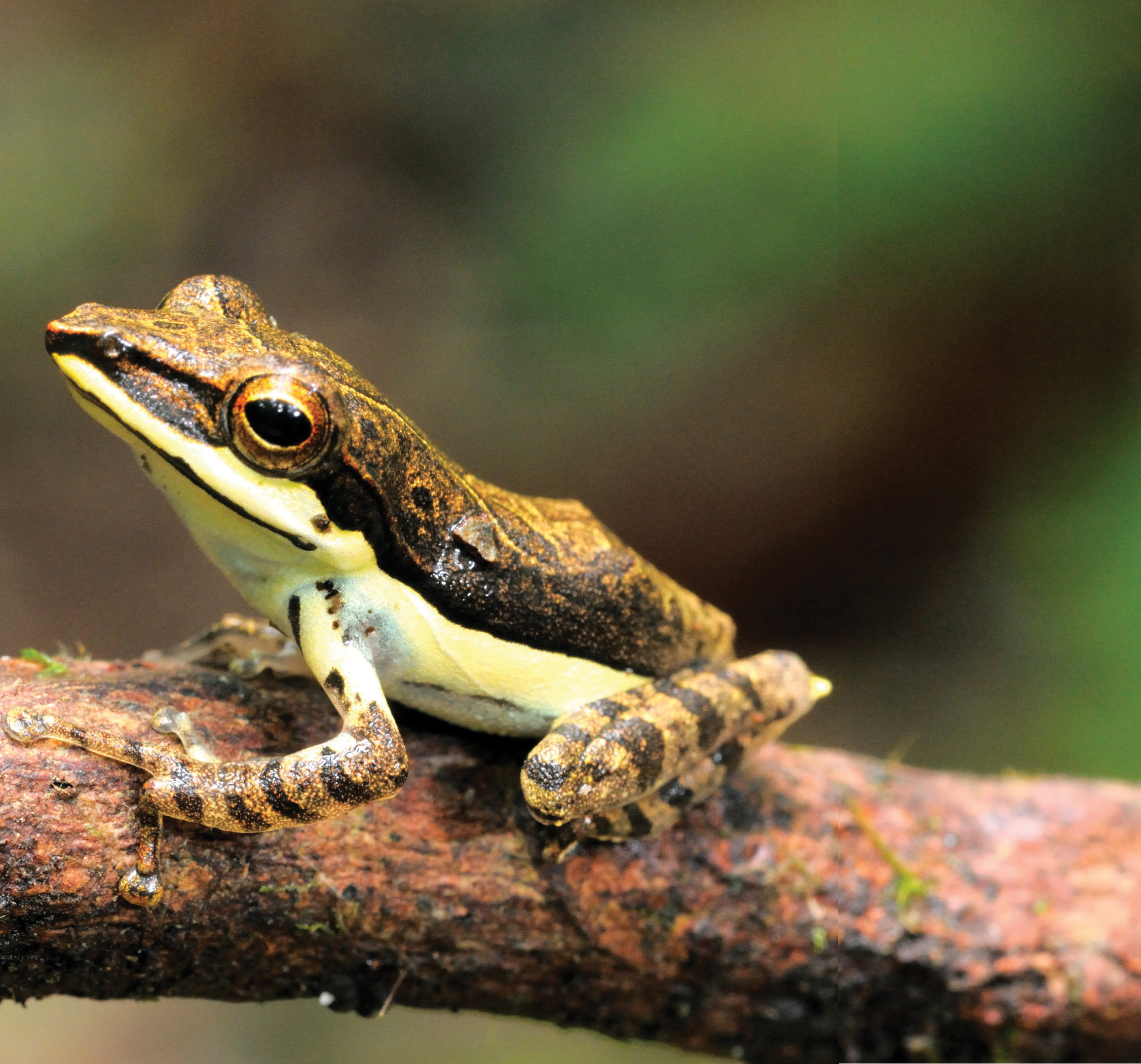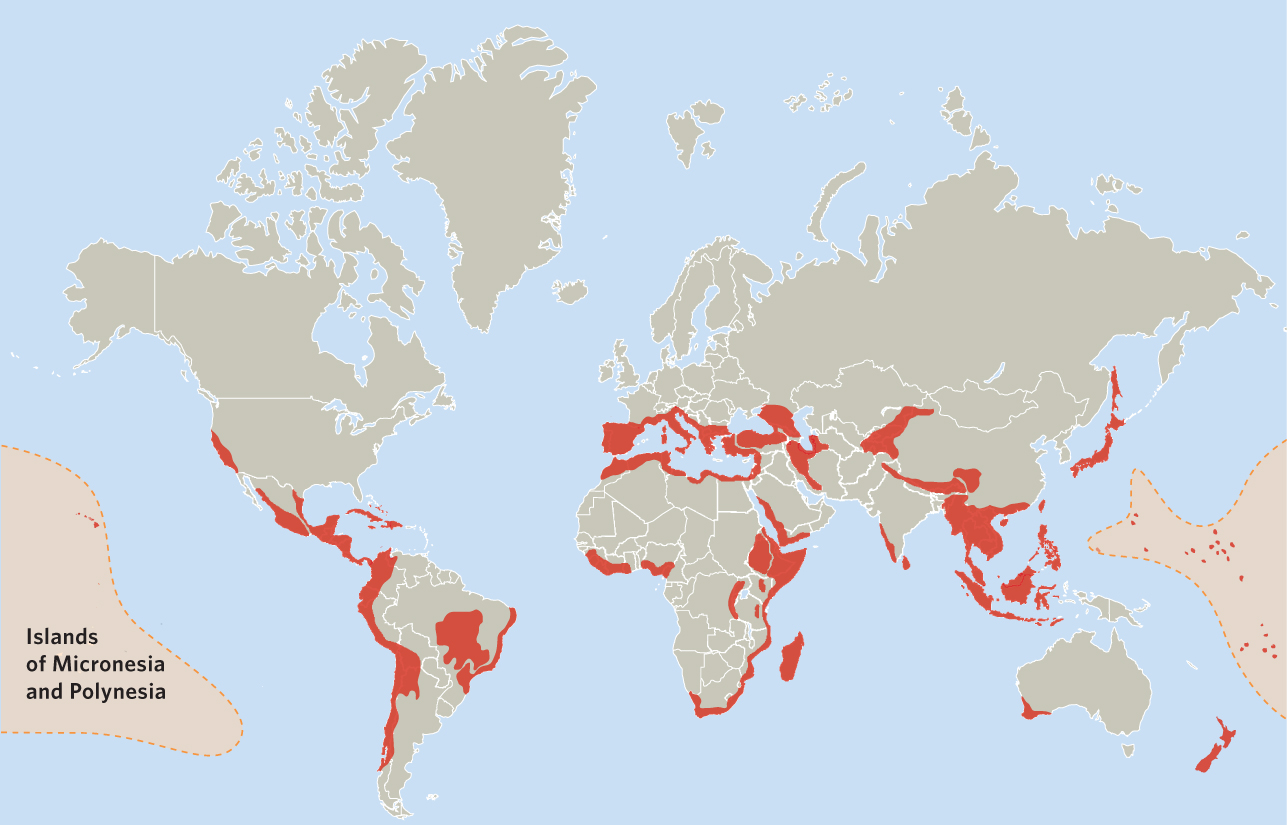Chapter 23
Global Conservation of Biodiversity
540

541
CHAPTER CONCEPTS
- The value of biodiversity arises from social, economic, and ecological considerations.
- Although extinction is a natural process, its current rate is unprecedented.
- Human activities are causing the loss of biodiversity.
- Conservation efforts can slow or reverse declines in biodiversity.
Protecting Hotspots of Biodiversity
The biodiversity of the world faces a wide range of threats from a growing human population that has caused species to go extinct at a rapid rate. To reverse this downward spiral, conservationists seek ways to protect aquatic and terrestrial ecosystems so that threats from human activities can be reduced or eliminated. A common approach to protecting species is to protect their habitats. But there are limits to how much habitat can be protected: not all habitats are available for purchase, limited funds are available for purchasing habitats, and political and economic factors often play a role in determining whether or not particular habitats can be set aside. With all these limitations, how should we prioritize the protection of the world’s biodiversity?
“How should we prioritize the protection of the world’s biodiversity?”
In 1988, Norman Myers noted that small isolated areas such as tropical islands contain a large proportion of endemic species, which are species that have a relatively restricted distribution and are not found in other parts of the world. Therefore, a large proportion of the world’s terrestrial species is located in a relatively small portion of the world’s land. Myers argued that we should concentrate our conservation efforts on these species-rich areas, which he defined as biodiversity hotspots, because saving these areas should save the most species.
Myers identified 10 locations on Earth as biodiversity hotspots. Shortly afterward, the group Conservation International adopted Myers’ approach and decided that hotspots should be defined as areas that contained at least 1,500 endemic plant species and that had experienced at least 70 percent vegetation loss due to human activities. These criteria would identify areas of high species richness facing substantial threats. The group assumed that regions with high plant diversity also contained high animal diversity. Conservation International identified 34 biodiversity hotspots around the world, including the Caribbean Islands, the Cape Floristic Region of South Africa, and several sites in the islands of Southeast Asia. Collectively, these locations represent 2.3 percent of the Earth’s land surface but contain 50 percent of the world’s plants (more than 150,000 species) and 42 percent of the world’s vertebrate animals (nearly 12,000 species). A similar effort is underway for aquatic hotspots, although conservation of declining fish and invertebrate diversity remains in the early stages.
542

While identifying hotspots based on high numbers of endemic species is certainly reasonable, some scientists have suggested other approaches. One such approach would be to focus on areas that simply have high species richness. For example, the Amazon rainforest has a very high number of species, but most are not endemic to small geographic areas. Another approach would be to prioritize species-rich locations facing the highest current or future threats of species extinctions, such as locations that have, or are projected to have, a rapidly growing human population. Each approach supports a different list of protection priorities. Focusing conservation priorities on places with high diversity, however, automatically excludes low-diversity locations with species that people care about, such as the bison, wolves, and grizzly bears that live in western North America. It also places an emphasis on species richness rather than on the important functions that many ecosystems provide. As an example, although wetlands typically have low plant diversity, they are incredibly important for flood control and water filtration.
It is clear that we can take a variety of approaches in how we prioritize the conservation of biodiversity. All of these approaches seek to help us invest our limited resources to save the most biodiversity that we possibly can. In this chapter, we will focus on the services that we receive from biodiversity, the causes of the decline in biodiversity, and the efforts that are being made to save it.
SOURCES: G. Bacchetta et al., A new method to set conservation priorities in biodiversity hotspots, Plant Biosystems 146 (2012): 638–648.
P. Kareiva and M. Marvier, Conserving biodiversity coldspots, American Scientist 91 (2003): 344–351.
N. Myers et al., Biodiversity hotspots for conservation priorities, Nature 403 (2000): 853–858.
C. D. Orme et al., Global hotspots of species richness are not congruent with endemism or threat, Nature 436 (2005): 1016–1019.
 Throughout this book, we have examined factors that affect the distribution of species around the world. We have seen that these distributions are a result of the abiotic conditions a species can tolerate, the positive and negative interactions that occur among species, the ability to disperse to suitable habitats, and historical processes that include the movement of the world’s continents. We have also examined how human activities have affected particular species and how conservation efforts have tried to minimize these impacts. In this final chapter, we will take a broad view of the decline in biodiversity around the globe. We begin by considering the many different ways in which people value biodiversity. We will then compare current rates of biodiversity decline with historic rates and examine the ways in which human activities contribute to these declines. Finally, we will discuss efforts underway to slow or even reverse the decline of biodiversity.
Throughout this book, we have examined factors that affect the distribution of species around the world. We have seen that these distributions are a result of the abiotic conditions a species can tolerate, the positive and negative interactions that occur among species, the ability to disperse to suitable habitats, and historical processes that include the movement of the world’s continents. We have also examined how human activities have affected particular species and how conservation efforts have tried to minimize these impacts. In this final chapter, we will take a broad view of the decline in biodiversity around the globe. We begin by considering the many different ways in which people value biodiversity. We will then compare current rates of biodiversity decline with historic rates and examine the ways in which human activities contribute to these declines. Finally, we will discuss efforts underway to slow or even reverse the decline of biodiversity.
543